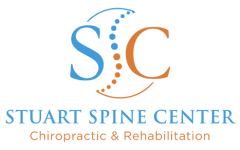One of the most common issues that can affect people of all ages is knee pain. When it becomes difficult to perform simple daily activities such as walking or bending, it can be a frustrating and painful interference. Knee pain can arise from an injury, sports activity or exercise, being overweight or medical conditions such as arthritis or gout. It’s severity of pain and range of symptoms can vary widely and there can be just as many treatment options. The main function of the knee is to bear weight, bend and straighten. It is a hinged joint that twists and rotates, relying on an organized and deliberate network of bones, ligaments, tendons and cartilage.
When there is damage to any of the surrounding ligaments, tendons, bone, cartilage or fluid around your knee, there are many kinds of injuries that can arise. Some of the most common are ACL injuries, fractures, meniscus tears, bursitis, tendonitis, arthritis and broken kneecaps. Ligament injuries in one of the four ligaments connecting your shinbone to your thigh bone such as ACL (anterior cruciate ligament) or PCL (posterior cruciate ligament) stem from a sudden twisting motion or direct impact respectively. Many ACL injuries occur in those that play sports like basketball or soccer. PCL injuries are typically caused by direct impact like a car accident or sports. The meniscus, a tough rubbery cartilage acting as a shock absorber between your shinbone and thighbone can become torn from bearing weight or suddenly twisting the knee. Bursitis occurs when bursae, small sacs of fluid that cushion the knee joint become inflamed. With over 100 types of arthritis, many can affect the knee by wearing away cartilage. Other risk factors can include being overweight, lacking muscle strength and flexibility, certain sports such as skiing, basketball or running, labor intensive jobs such as construction or farming and previous injury.
Dr. Kenyon starts with an thorough and accurate diagnosis of your pain. Knee pain can have many causes such as osteoarthritis, an injury, referred pain, excessive weight, and even imbalances in the spine. The examination and evaluation will determine the specific cause of the condition. Treatment options will vary based on the root cause of the knee pain. Chiropractic care can provide hip and knee manipulation which greatly increases mobility an can decrease inflammation. Chiropractic adjustments can correct a patients posture imbalances which can lead to uneven distribution of body weight, therefore, lessening the burden on the affected knee. Physical therapy is very effective for rehabilitating injured ligaments and strengthening weakness in muscles that support the knee. Additional treatments such as trigger point therapy and manual therapy can decrease pain and inflammation while improving the flow of nutrients to soft tissue.


4401 SE Federal Highway,
Suite 104
Stuart, FL 34997
StuartSpineCenter@gmail.com
Monday (8:00 AM - 6:00 PM) Tuesday (8:00 AM -6:00 PM) Thursday (8:00 AM - 6:00 PM)
772-286-1720
© 2020 All rights reserved